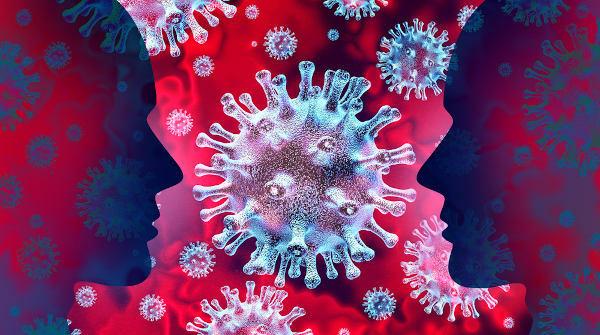Coronavirus is the name given to a family of virus whattriggers respiratory diseases in humans and other animal species. Although they are well known for causing serious illnesses, such as severe acute respiratory syndrome and the Middle East respiratory syndrome, coronaviruses are also responsible for common colds. Next, we'll explore more about coronaviruses and the health problems they cause.
Read too: Differences between covid-19, flu and cold
Characteristics of coronaviruses
Coronaviruses are a family of viruses related to the development of colds and other more severe respiratory syndromes. are given this name by resemble a crown when viewed under a microscope electronic.
They are viruses called zoonotic, as they can be transmitted from other animals to humans. It is noteworthy that the transmission of coronaviruses can also occur from one person to another, such as through close contact with the patient and contact with contaminated surfaces and subsequent hand contact with mucous membranes.

Coronavirus Diseases
Coronaviruses cause infections respiratory. Among the best-known problems are the common cold, severe acute respiratory syndrome (also called Sars), and Middle Eastern respiratory syndrome (also called Mers).
In addition, at the end of 2019, a new type of coronavirus was discovered in China, being responsible for a number of deaths.
Below are some of the main characteristics of diseases caused by this virus.
- Common cold: it affects the upper airways and can be caused by different viruses, including the coronavirus. It usually leads to symptoms such as nasal obstruction, runny nose, sneeze and cough. Usually, people with a cold do not have fever or just a low-grade fever.
- Severe Acute Respiratory Syndrome (SARS): it is very serious and was first identified in China in 2002. The infection started after contact with sick wild cats. This disease progressed very quickly to respiratory failure and was responsible for causing the death of about 800 people. The epidemic was stopped in 2003 and, since 2004, no cases of the disease have been registered.
- Middle Eastern Respiratory Syndrome (Mers): was first identified in 2012, in Saudi Arabia. Mers may have been transmitted to humans by dromedaries, which are important reservoirs of the virus. As of May 22, 2014, 204 deaths had been confirmed as a result of the disease.
- Covid-19 (SARS-CoV-2): the virus was isolated on January 7, 2020 and discovered after a series of unexplained respiratory infections occurred in China. Covid-19 causes symptoms such as fever, tiredness and dry cough and can progress to a severe respiratory syndrome, which is characterized by difficulty breathing. The vast majority of people with covid-19 recover well; others, however, may require hospitalization and even mechanical ventilation, which may lead to death.

Symptoms of Coronavirus Diseases
Diseases caused by coronaviruses mainly affect therespiratory system. Thus, their manifestation generally includes cough, difficulty breathing, shortness of breath and fever. In more severe respiratory syndromes, the individual can develop renal insufficiency and even die. It is noteworthy that diseases caused by coronaviruses do not have specific treatment, only their symptoms are treated.
Read too: What is a pandemic?
Prevention of Coronavirus Diseases
Coronavirus transmission can occur through contact with the sick individual or with infected animals. Therefore, we can mention as ways of prevention:
- avoid contact with the patient;
- always remember to wash your hands, especially if you are in contact with sick people;
- not share personal objects;
- avoid contact of hands with mucous membranes without being properly sanitized;
- avoid crowded places;
- maintain well-ventilated environments;
- avoid contact with sick animals;
- cook food well, such as meat and eggs;
- keep a distance of about 2 meters from other people;
- wear masks whenever you leave the house.



